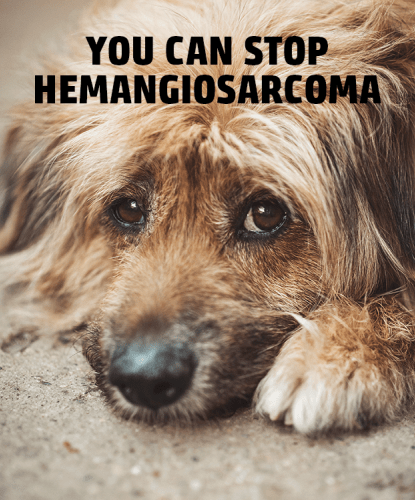
DENVER/Oct. 26 – A scientific analysis published in Veterinary and Comparative Oncology using Golden Retriever Lifetime Study data notes a potential correlation between canine sterilization and hemangiosarcoma development. This startling finding has been previously suggested by experts but still is poorly understood.
The authors note that the likelihood of diagnosing hemangiosarcoma appears consistently low across all sexes and neutering statuses until about eight years of age. Beyond this point, intact and neutered male dogs face a similar risk of contracting the disease. Interestingly, the probability of diagnosis for intact females consistently remains lower than any other sex/neutering status. Meanwhile, the likelihood of diagnosis in spayed females increases.
Hemangiosarcoma is the most common cancer diagnosed in the Golden Retriever Lifetime Study cohort. It is a particularly deadly cancer, with roughly 90% of dogs dead within one year of diagnosis. Few dogs survive longer than two years, even with aggressive therapy.
Alison Hillman, a researcher involved in the study, emphasized the need for further exploration into the potential correlation between canine cancer and sterilization, urging the inclusion of more data from older dogs. Furthermore, she added that continued analysis honing in on the link between hemangiosarcoma and sterilization will provide more insight into potential causative factors.
“This information may also be of value in the context of translational research, as hemangiosarcoma is rare in humans and thus difficult to study,” Hillman said. “Lessons learned through research in dogs may inform prioritization of investigations in humans, given the similarity between dogs and humans regarding the clinical and pathological features of this tumor, and the relative similarity in genetics between the two species as compared to, for example, mice and humans.”
“Thanks to the availability of data from the Golden Retriever Lifetime Study through Morris Animal Foundation’s Data Commons, analyses like these are possible,” said Kathy Tietje, the Foundation’s Chief Program Officer, who was also involved in the project.
“This analysis serves as a fundamental research tool, with potential for further use by other scientists to generate hypotheses and design their own studies,” she added. “It also underscores the immense value of the Study’s resources for scientists actively engaged in this field.”
About Morris Animal Foundation
Morris Animal Foundation’s mission is to bridge science and resources to advance the health of animals. Founded in 1948 and headquartered in Denver, it is one of the largest nonprofit animal health research organizations in the world, funding nearly $160 million in more than 3,000 critical animal health studies to date across a broad range of species. Learn more at morrisanimalfoundation.org.
Media Contact: Annie Mehl





